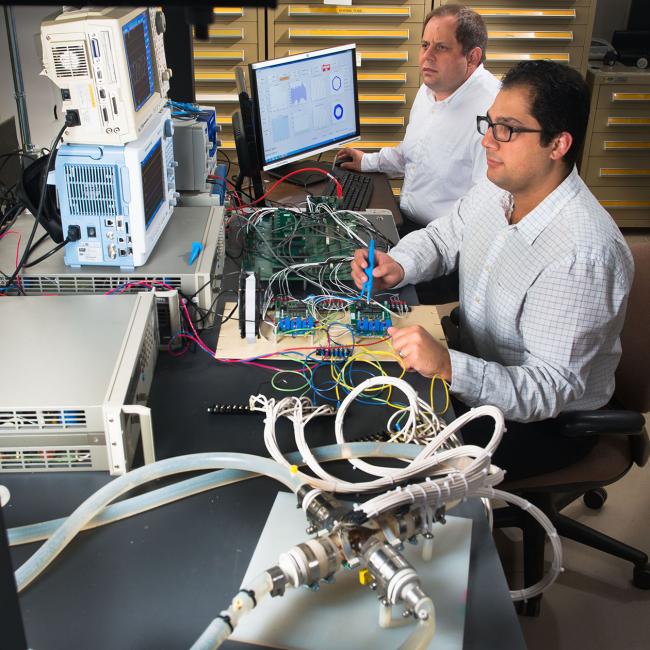
NASA Glenn Technology pumps hope into broken hearts
One particular heart problem has consumed much of his research and he has reached out to NASA Glenn Research Center to help him solve it.
“About 1,500 children are born every year with a missing ventricle,” says Rodefeld. “The numbers sound low, but it’s actually the fifth most common problem in those with heart issues.”
By having half a heart essentially, the body is missing half of its pumping ability to oxygenate blood and circulate it to stay alive. Currently, the best solution is a heart transplant, however, it’s a limited option due to donor availability and short-term success.
The next best solution, and most commonly used with patients, is a partial fix called the Fontan procedure, which requires three open-heart surgeries to create a passive circulation network to replace the blood pumping function of the missing ventricle.
“The children survive, but eventually, inefficiency in circulation due to the low pumping pressure catches up with them in their early adulthood when the remaining part of the heart gets worn out from doing all the work,” he says.
So Rodefeld came up with an idea to insert a small conical pump, driven by an electrical motor, into an existing Fontan network. This pump would reproduce the pressures and flow coming from the body and head, reducing the wear and tear on the single remaining ventricle and extend the life of the patient.
“I knew I wanted to put a bi-conical motor into the cross section of the network, but I needed experts in flywheel technology at NASA Glenn to design and scale it to size,” he explains.
A team of engineers at Glenn spent two years designing, building and testing a bi-conical heart pump for Rodefeld. Eventually they completed a functional prototype of the bi-conical heart pump to allow for traditional motor operation as well as levitation operation.
“Unlike conventional motors, the outside rotor of this pump spins around the inside, which allows for complex fluid pump shapes to be created on the surface of the rotor,” says NASA Glenn’s David Avanesian, a systems engineer and project manager. “Those shapes then ‘grab’ blood coming from the body and head, mix it, and then direct it to lungs for oxygenation using the von Karman effect for asymmetrical flow pattern.”
The Glenn team’s extensive design, build and testing led to successful results proving the feasibility of Rodefeld’s original idea. And while the size of the motor has been scaled down significantly, engineers need to make it even smaller to fit into the Fontan circulation architecture. Further development would help scale the motor down to the required diameter -- the size of a nickel.
Over the next few years Rodefeld hopes to engage Glenn engineers in additional development and testing with the goal of advancing this life-saving technology in young patients.
Image credits: NASA/Bridget Caswell
Support Our Journalism
We cannot do without you.. your contribution supports unbiased journalism
IBNS is not driven by any ism- not wokeism, not racism, not skewed secularism, not hyper right-wing or left liberal ideals, nor by any hardline religious beliefs or hyper nationalism. We want to serve you good old objective news, as they are. We do not judge or preach. We let people decide for themselves. We only try to present factual and well-sourced news.







